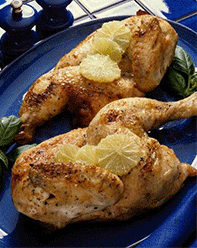Temperature Instruments to Keep Your Meal Safe
With family and friends visiting over the holidays, food safety is top priority. Keeping food thermometers nearby is a key step in the food preparation process. When handling poultry, beef, ham, and other meats, avoid cross contamination and ensure meat is fully cooked to lessen the likelihood of foodborne illness.
 Raw meat may contain bacteria (such as E. coli,salmonella, and listeria, or parasites), yet proper cooking will destroy these organisms. While you may be inclined to visually check whether your turkey or ham is cooked, this type of assessment can be deceiving. It may look done but may not have reached a safe internal temperature. A food thermometer can help you with this. Depending on the type of meat you are cooking, safe temperatures can range from 140-165°F.
Raw meat may contain bacteria (such as E. coli,salmonella, and listeria, or parasites), yet proper cooking will destroy these organisms. While you may be inclined to visually check whether your turkey or ham is cooked, this type of assessment can be deceiving. It may look done but may not have reached a safe internal temperature. A food thermometer can help you with this. Depending on the type of meat you are cooking, safe temperatures can range from 140-165°F.
FoodSafety.Gov also recommends that you allow meat to rest up to three minutes after removing it from the stove or grill. "During the rest time, its temperature remains constant or continues to rise, which destroys harmful germs."
Yet, if meat is not prepared and stored properly, it can become contaminated again. Maximize the safety of the food you serve by cleaning food preparation surfaces regularly and keeping raw meats separate from the other foods you are have prepared. Also, when the meal is over, refrigerate foods quickly.
Comentarios
Publicar un comentario